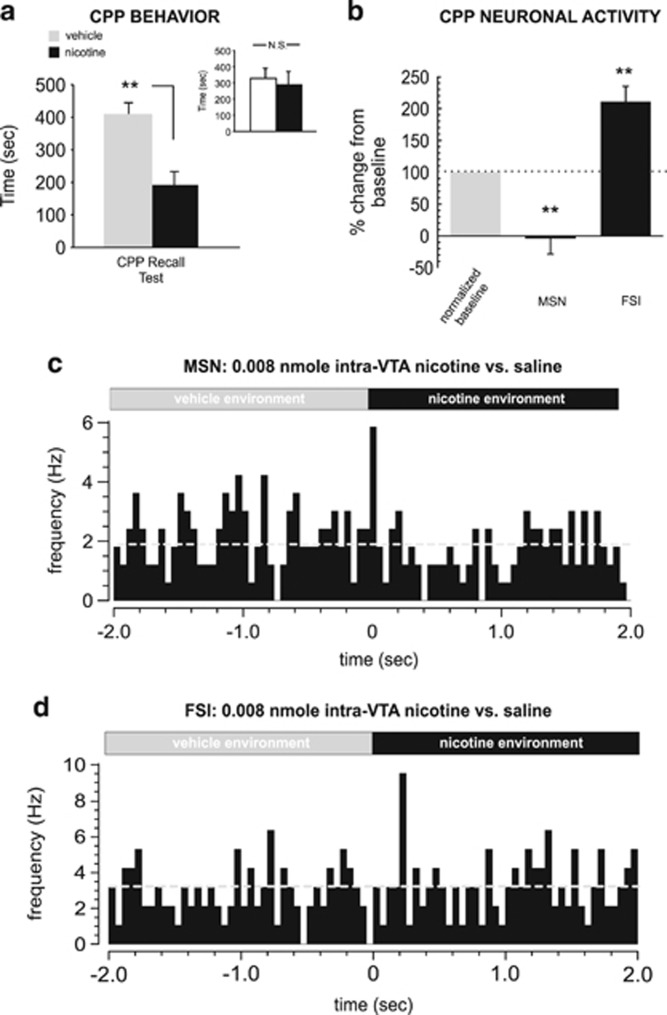Figure 6.
Behavioral and neuronal responses to nicotine aversion conditioning. (a) A lower dose of intra-ventral tegmental area (VTA) nicotine (0.008 nmol/0.5 μl) produces a strong aversion to nicotine-paired environments. Inset shows average times spent in the separate conditioning environments, independently of treatment condition. (b) During place conditioning testing, medium spiny neurons (MSNs) show decreased activity relative to baseline and fast-spiking interneurons (FSIs) show increased activity, during exposure to nicotine-paired environments. (c) Representative MSN recorded during the place conditioning test, showing a characteristic decrease in spontaneous activity during nicotine–environment exposure. (d) In contrast, a typical FSI neuronal activity raster showing a characteristic increase in activity during nicotine–environmental exposure. *p<0.05; **p<0.01. N.S., not significant.

